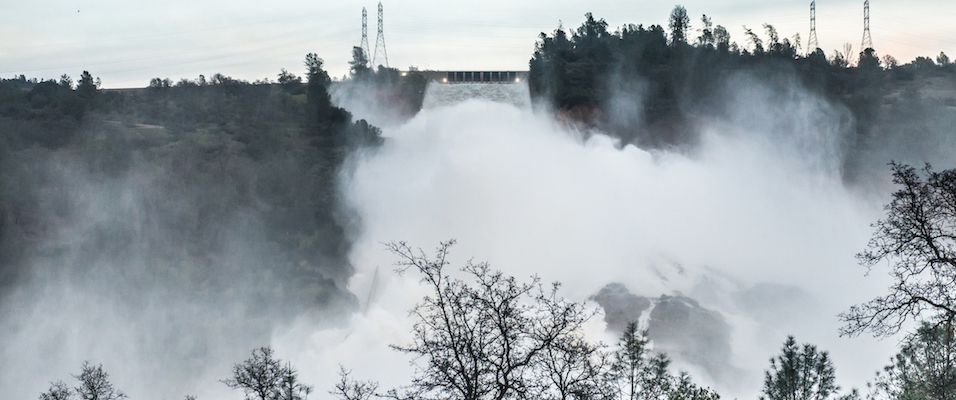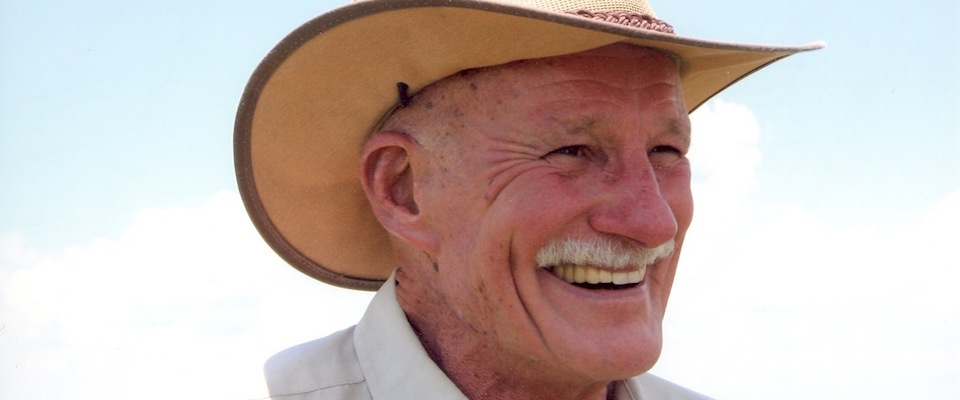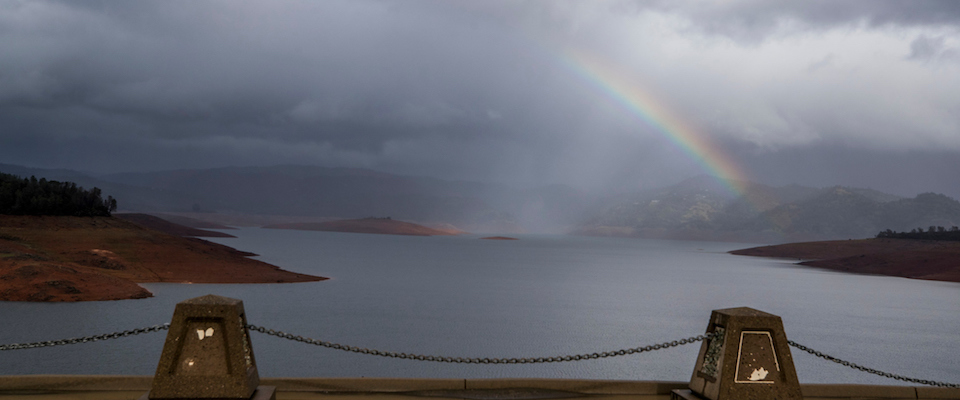The Sacramento Valley came within a skosh of true catastrophe this winter when both the main and emergency spillways at Oroville Dam on the Feather River eroded due to high water releases necessitated by torrential rains. State officials ordered an evacuation of 200,000 residents in communities below the dam, and for a few days the possibility of a 30-foot-wall of water scouring the Sacramento Valley from Oroville to the Delta was very real indeed.
For most California residents, the event was deeply disturbing simply because it seemed unprecedented. California, after all, is not New Orleans or the western Philippines, subject to the constant threat of inundation and the catastrophic loss of life and property from gargantuan storms. But that points to a general misapprehension on the part of the public. Engineers such as Cal emeritus professor Robert Bea have long warned that the state’s flood control infrastructure is inadequate to the challenges it will face in an emerging era of climate change, and that we could be one wet winter away from a disaster that would dwarf the devastation wrought by Hurricane Katrina.
But for some Californians, the recent events at Oroville weren’t a wake-up call; they were a bitter and traumatic reminder. Cal alum Tom Britzman was living in Yuba City in 1950, prior to the construction of Oroville Dam (completed in 1967). An unusually heavy snowfall in November was followed by warm rains at high elevations, pumping up the Feather and Yuba rivers. Both Marysville and Yuba City are near the confluence of the two rivers, protected from flooding by a network of levees.
The 1950 flood was bad, said Britzman, but it turned out it was just a mere precursor to a far more destructive event in 1955.
“There was so much rain in the mid-Sierra that the rivers rose to the top of the levees within a few hours,” says Britzman. “If they had overtopped or broken, Marysville would have filled up like a saucer. But before that happened, a levee on the south side of the Yuba River either broke or was deliberately blown out by somebody, water drained to the south, and the town was saved. But two nearby smaller towns south of Marysville, Oliverhurst and Linda, did flood. A lot of the homes were under six feet of water.”
The 1950 flood was bad, said Britzman, but it turned out it was just a mere precursor to a far more destructive event in 1955. The scenario was much the same, though this time in December: heavy snow in the Sierra followed by drenching, warm rains. Again, both the Feather and Yuba Rivers raged, again threatening Marysville and Yuba City.
“By December 23, it was serious enough that all the auto dealers in Marysville moved their cars to Yuba City [which, though roughly the same elevation of Marysville, was considered slightly less prone to flooding],” says Britzman. Marysville was a dry island surrounded by muddy water.”
Roads out of Marysville to the north and south were closed; the only open route was west. Britzman, then working for Sears, helped fellow employees move company vehicles 15 miles west to the town of Sutter. At about 2:00 p.m., Britzman’s pregnant wife, Jean, and their four-year-old daughter, Nikki, evacuated to Sacramento by a circuitous route that was choked by the cars of other evacuees. Britzman stayed behind to help other locals fill sandbags to bolster levees.
“Sometime around 8:00 pm we heard the fire whistle blow, and we all assumed it meant the levee had failed and we should immediately evacuate,” says Britzman. He borrowed his father’s sports car and drove to an evacuation center at nearby Sutter High School to spend the night.
“By the time I was within a mile of my home the water was to my waist. I could tell the water was starting to recede because automobiles that had been flooded showed debris on their hoods.”
On returning to Yuba City early the next morning, he discovered that a levee had breached the Feather River near its confluence with the Yuba. A 20-foot wall of water had surged into the south end of Yuba City, knocking homes off their foundations. Britzman parked his car and started wading through water toward his home. National Guardsmen or soldiers armed with rifles were patrolling the town, with orders to shoot looters on sight. Britzman was wearing a khaki shirt with seargent stripes he had retained from a stint in the Army, and was left unmolested by the troops.
“By the time I was within a mile of my home the water was to my waist. I could tell the water was starting to recede because automobiles that had been flooded showed debris on their hoods. When I got to my house, there was so much water in it that waves were sloshing around my living room from the wakes of motor boats going by. Our Christmas tree was on its side in the living room, and the silt and flood water had a sickening stench.”
A high foundation, however, saved the house from terminal damage. Britzman’s parents also lived in Yuba City, and had to be evacuated by boat; Jean Britzman’s parents, also local residents, were flooded out as well. Britzman struggled through an inundated and otherworldly landscape as he tried to ascertain the safety of family members.
“The streets were strange, with a combination of abandoned cars that had been underwater and boats that had been used to evacuate people and then left high and dry when the water drained off,” he says. “On Christmas Day I drove my pick-up over to Colusa, then down to Sacramento, and was re-united with Jean and Nikki. Jean had heard all the terrible newscasts, and it was a long couple of days for her, not knowing how I fared.”
It took months to pump all the water out of Yuba City and other inundated portions of the region, says Britzman, and the property damage was extreme: not only had hundreds of homes and businesses flooded, but two major bridges at Yuba City and Marysville had washed out. Ironically, Marysville, considered at greater risk for flooding than Yuba City, stayed more or less dry. The cars that had been moved from Marysville dealerships to Yuba City lots were all submerged.

Far worse than the property damage was the loss of human life. Seventeen people died, says Britzman, “including a very brave deputy sheriff who was trying to advise people to get out, and was trapped.”
For the Britzmans—as for most people in Sutter County—the clean-up was long and arduous; they found silt in odd corners of their house for years afterward. And while they slowly replaced their damaged furniture, “We lived with a water-stained sofa until 1960.”
More pointedly, the flood upended the family’s sense of an ordered, safe, and peaceful world. After the 1955 Christmas Eve Flood, says Britzman, “We always looked at a potential home with a different view. We look for higher ground and good drainage even to this day.”
Britzman and his wife eventually moved to Prescott, Arizona, and they now live in the Monterey area. But the Feather and Yuba Rivers were not finished inflicting woe on his family. His daughter, Nikki, remained in Yuba City. A levee broke south of Marysville in 1986 and Nikki and her two children had to evacuate to Beale Air Force Base. The family wasn’t allowed to take their pets. One of their cats drowned, and a dog saved himself only by clambering on the roof of his dog house.
“Nikki had about four feet of water inside her home, and many valuable books and family pictures were lost along with clothing, furniture and appliances,” says Britzman. “Jean and I drove north to see her and the two boys after the water receded. The horrible odor of the flood came back to us, an odor we had gratefully forgotten.”
Nikki and her family had to evacuate again in the great flood of 1997. Reporters covering the event described cars, small buildings, and giant, venting propane tanks floating downstream at the point Highway 70 disappeared into the surging Yuba River, which was as broad and brown as the Mississippi.
“We had significant hopes for Oroville Dam,” says Britzman. “We wanted it completed as rapidly as possible. I remember writing a letter to the Sacramento Bee, protesting state investment in the 1960 Winter Olympics at Squaw Valley. I felt that money would have been better spent on flood control projects. Once the dam was built, we felt secure, we felt it would protect us. But the floods in 1986 and 1997, the near-failure of the dam this year. That feeling is gone. If the dam had ruptured last winter, there would have been no recovery for the Sacramento Valley. It would’ve taken out everything, right through the Delta.”





















